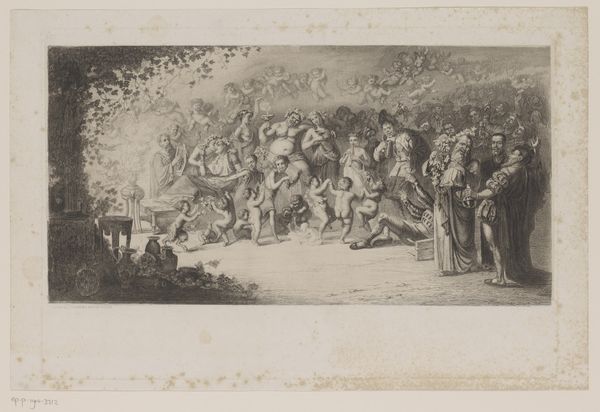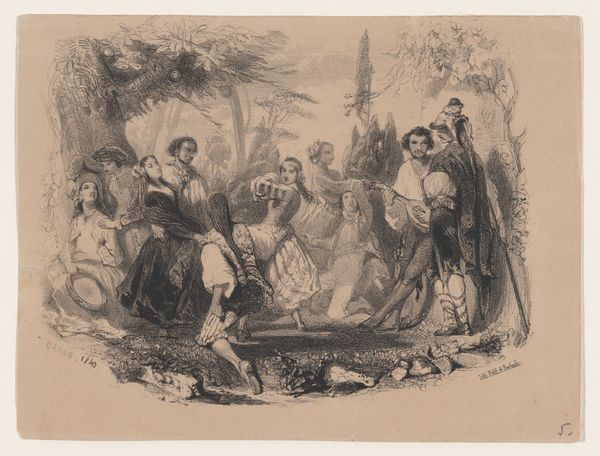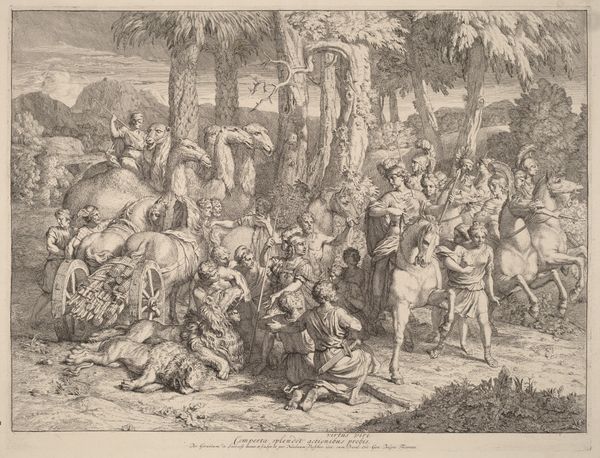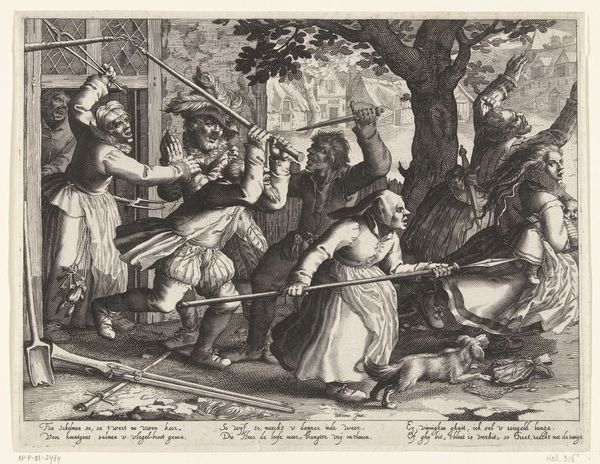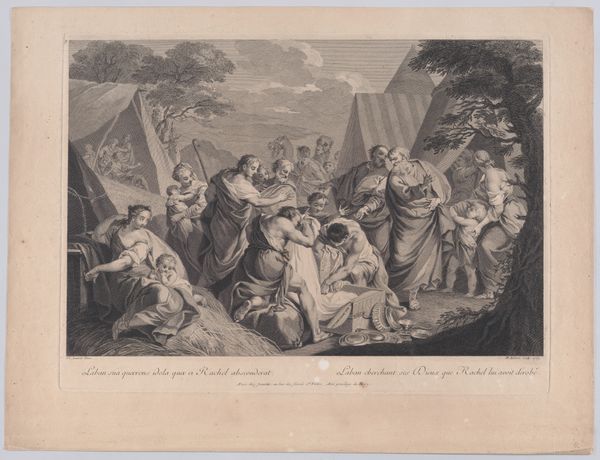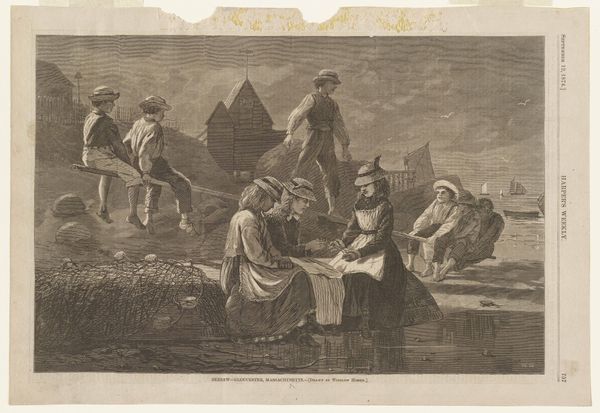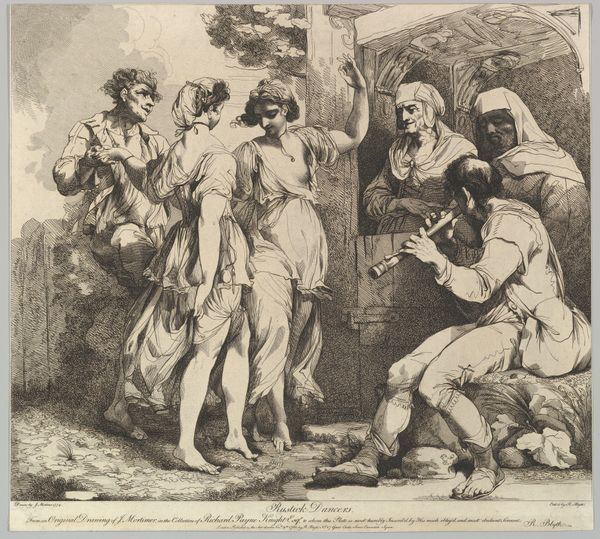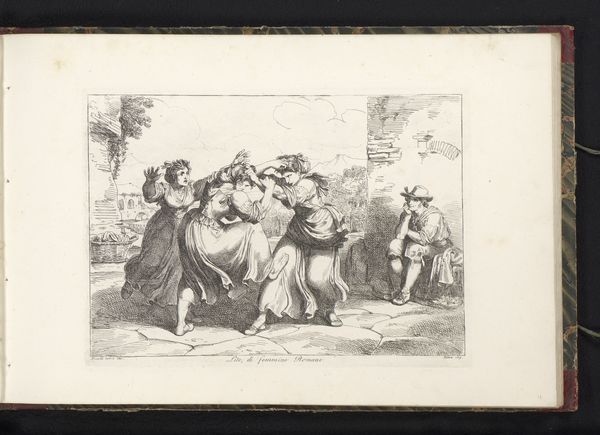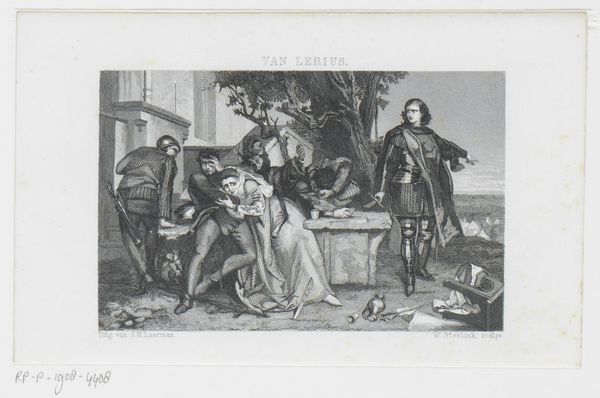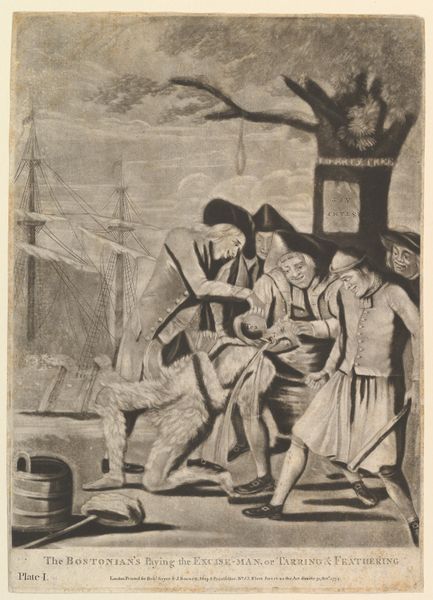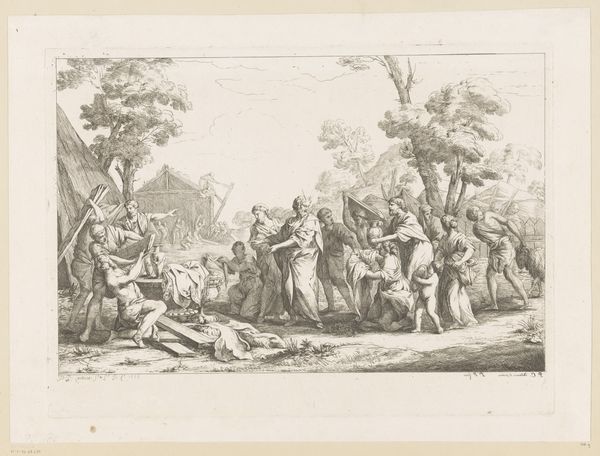
drawing, print, etching, paper
#
portrait
#
drawing
#
neoclacissism
#
narrative-art
# print
#
etching
#
landscape
#
classical-realism
#
figuration
#
paper
#
genre-painting
#
history-painting
Dimensions: 220 × 335 mm (plate); 233 × 347 mm (sheet)
Copyright: Public Domain
Curator: This etching, "Diogenes in His Tub with Alexander and His Generals" created by Carl Russ in 1810, presents a fascinating juxtaposition of power and philosophy. I’m curious about your initial take on this piece. Editor: Immediately, I’m struck by the contrast. The central figures are rendered with incredible detail while the surrounding landscape almost fades into the background. There is this powerful sense of immediacy, it’s really well crafted. Curator: The historical context is quite rich here. Diogenes, the Cynic philosopher, famously lived in a tub, rejecting societal norms. Alexander the Great, on the other hand, was the ruler of an empire, embodying worldly power. Editor: Exactly, and that’s where the critical reading starts. Is this rendering a valorization of poverty or critique of excess, especially when situated historically? The dynamic raises so many questions about systems of belief and challenges that underpin the socio-political structures of the period. Curator: Art historically, this etching reflects the neoclassical style prevalent at the time, characterized by its emphasis on line, form, and classical subjects. The scene depicted draws from ancient anecdotes, blending historical fact with moral lessons. This was the way narrative paintings communicated in that era. Editor: But is the work truly successful in challenging norms when produced during an era of rising national sentiment? Could the glorification of the past not subtly serve existing power structures, using a historic example of rebellion as a symbol within a specific society? It is fascinating to consider what and whom these artistic choices were supposed to serve. Curator: It raises a critical question. Even within its apparent advocacy for simple living, the artist might inadvertently be perpetuating power dynamics by merely staging this encounter, effectively containing it within a controlled artistic frame. Editor: Indeed. Art rarely exists outside of power; its mere representation always risks upholding specific social hierarchies. We must analyze the visual message alongside the backdrop of 19th-century European political developments. Curator: These nuances really highlight how artworks operate not only as aesthetic creations, but also as intricate reflections of their time. Editor: Agreed; engaging with them demands that we also evaluate the cultural contexts and biases woven into their making. Thanks for shedding light on this work.
Comments
No comments
Be the first to comment and join the conversation on the ultimate creative platform.
